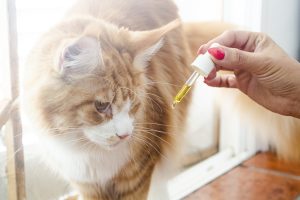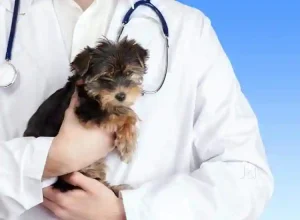Your dog is overweight, and you have no idea how to help him to lose those extra pounds. Here are the best tips on what you can do with your furry friend and some healthy weight-loss treats for dogs with weight issues.
Feed your dog green beans
Green beans are a good fiber source, which helps regulate the digestive system and control the appetite. They are also rich in antioxidants, which help to fight free radicals that cause cancer and disease.
You can feed green beans raw or cooked, but keep in mind that cooked green beans have less nutritional value than raw ones. You can cook them in water or steam them for just a few minutes until they become soft and tender. If you want to add flavor to your dog’s diet, try adding herbs or spices such as parsley, garlic, or rosemary to the cooking process.
Another way to use green beans as a healthy treat is to freeze them in ice cubes and serve them frozen as an extra special treat! This is especially good if you’re giving your dog medication because it will help prevent him from chewing on his food bowl while he waits for his medicine.
Low fat dog treats
If your dog is overweight, switching to low-fat dog treats can help them lose weight.
Many different factors contribute to a dog’s weight. Age, breed, and genetics all influence how much a dog weighs. Lifestyle habits also affect the amount of weight they gain or lose over time.
Overweight dogs are more susceptible to health problems such as diabetes, arthritis, and heart disease. They may also have trouble moving around and exercising efficiently due to their extra weight.
If your dog is overweight, you should speak with your veterinarian about how best to get them back to a healthy weight using low-fat dog treats. Your vet can tell you what type of food is best for your pet based on age and other factors such as size and activity level.
High-Protein Dog Treats
The best type of treat for an overweight dog is one that is high in protein and low in fat. This will help keep your dog’s weight down while satisfying his desire for something delicious. Look for treats that have more than 30 percent protein and less than 10 percent fat by weight.
Start by switching to a high-protein dog treat. These treats are especially effective at helping dogs shed pounds. That’s because they contain fewer carbohydrates than other types of dog treats, which means that they’re more filling and keep dogs fuller longer. So instead of wolfing down half a dozen treats at once, they’ll feel full after just one or two bites of their new high-protein treat.
High-protein dog treats also help curb your pet’s appetite—they’re so satisfying that they leave dogs wanting less food overall! So if you do decide to let your pup snack on some human food from time to time (which we support!), it won’t end up being as much of an issue for them as it would be otherwise.
Give your dog a high-fiber food
High-fiber foods can help keep dogs feeling full, which can help them lose weight. The average dog should eat between 2% and 3% of its body weight daily (for example, a 20-pound dog should eat between 1/2 lb and 1 lb). If you feed your dog too much, it may gain weight.
Feed them on a schedule. Feeding your dog twice a day at the same time can help with portion control because it’s easier to estimate how much food will be needed for two meals than it is for one meal.
Add more exercise to their routine
You’ll need to get your dog moving more often if your dog is overweight. It’s best to start slowly so that he doesn’t get injured, but once he’s ready for more intense exercise sessions, try these ideas:
Take him on longer walks – a brisk walk around the block once or twice a day isn’t enough exercise for an overweight dog. Walk around the block three times instead, or go on a long hike or run together in the woods. You can also take him on hikes in your neighborhood if you have one nearby (or, even better, take him on hikes at state parks).
Play fetch – tennis balls are great because they’re soft and don’t hurt when they hit your hand! If you have an open space like a field or park where he can run freely without getting lost or hit by cars, throw his favorite ball as far as possible to encourage him to run after it.
Watch out for signs of heat exhaustion – if your dog doesn’t have a lot of furs or is overweight, he’s more likely to overheat and get heat exhaustion than a dog with lots of coats or one that’s fit. If he starts panting heavily, gets pale around his mouth or nose, vomits, tries to lie down but can’t because he keeps falling over (called “passive collapse”),
Don’t feed them human-food
The most common mistake owners make when getting their dogs back into shape is feeding them human food. While it may seem like a good idea at first because you’re cutting down on costs and giving them something they will enjoy eating, there are several reasons why this is a bad idea:
Human food contains higher amounts of salt, fat, and calories than dog food. This can lead to weight gain and other health problems such as high blood pressure and diabetes.
Dog’s digestive systems are not designed to process human foods well, which can lead to diarrhea or vomiting when they overeat (or even just a tiny amount). If this happens regularly, it could lead to dehydration which is dangerous for any animal.
Conclusion
Hopefully, the tips you’ve read have been beneficial to you. Remember that when it comes to your dog’s health, there are no easy fixes. You need to find a healthy diet that works for both you and your dog and stick with it.
The food you can buy in stores is chock-full of chemicals and preservatives and will not be enough to help your dog lose weight. You must plan meals for your pet in advance to ensure he has healthy snacks available all the time – after all, treats keep the dog happy between those meals.






More Stories
Top 10 Signs Your Pet Needs to See the Vet Immediately
The Best Shrimp for Your Tropical Tank: A Guide to Freshwater Shrimp Species
Dogo Argentino vs. Pit Bull: Which Breed Is Right for You?